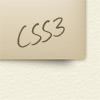Some years ago (2018 I think), I gave a talk during the JavaScript Meetup of Luxembourg where I presented briefly my interest for this new topic: CSS Variables. The official name of this specification is CSS Custom Properties. It allows you to store dynamic custom values to be used as CSS value within your code.
Posts from category ‘CSS / CSS3’
Custom Counters in pure CSS

CSS, since its version 2.1, offers a relatively unknown counter system due to an old incompatibility on IE. Some of you will probably defend the following position: CSS is not made for that, you have to use JavaScript. So be it! But know that it exists, and discover how to use it. Small introduction!
Flexbox·ninja – Learn Flexbox through use cases

Flexbox·ninja is a project I started a few years ago and that I had never taken the time to finish and publish. I wanted to propose at least 6 common use cases, but the web people suggested that I publish it with 3 cases and open it to contributions. That’s done, now let’s look at it in more detail.
How to code customized checkbox and radio buttons with CSS

In the past, I worked on several projects looking for a way to deal with custom styles proposed by some good designers to change the aspect like border color, check icon, animation, of form controls like checkbox, radio, file input, etc. As you may know, these elements are historically not style-able for accessibility reasons. (as I’ve heard). Still. I have a way to code custom accessible checkboxes and radio buttons for all devices. Ready?
Vintage Washed effect on photographies in CSS

The Vintage Washed effect is actually fashionable. The “users” of this effect are looking for an old aspect, they want to give to their photographies a kind of history by giving them an aged appearance, some people talks about an “authentic” appearance. Let see how to reproduce that effect with CSS.
Create a Sticky menu with CSS and JavaScript
 1
1
I recently worked on several websites, and the request for a sticky menu was almost systematic. Sometimes it was justified, sometimes I approached the stereotypical ergonomic counter-example. But still! Let’s see together how we can do that.
Natural Flow First
 1
1
Last week, I worked on a new short web project: the WP Media Company website. It’s a single web page with some typical sections and subtle animations. I was ready to code it with a Mobile First method, and I finally thought about a more natural one. I named it: (Natural) Flow First.
Advanced drop shadows with CSS3

I use the name “CSS3″ only for its “commercial” aspect. Actually, we will use my two favorite pseudo-elements :after and :before which are available since CSS2.1. I mean they are available since a long time ago… Demos you see in the demo page are composed with only one unique <div> and some CSS properties.






